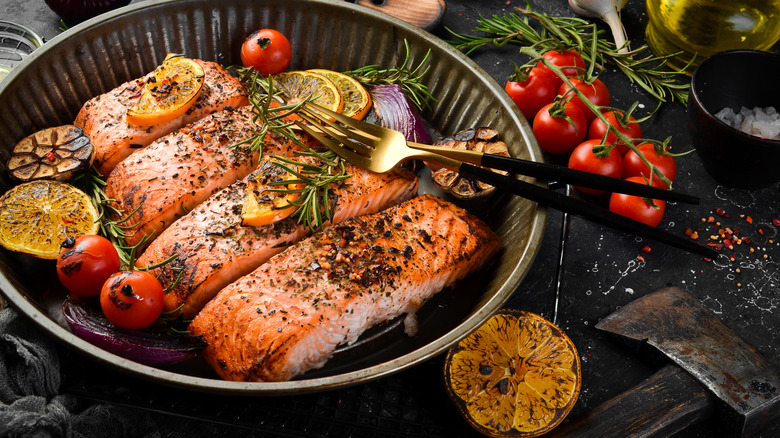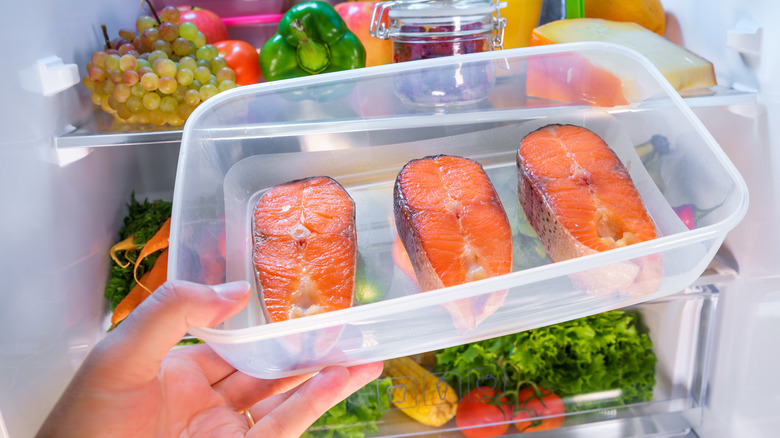The Most Important Thing To Do When Saving Leftover Salmon
Salmon is a favorite for its delicious taste, health perks, and versatile recipe applications. Whether you partake of a Simple Baked Honey Citrus Salmon or a Maple Glazed Sheet-Pan Salmon, a flaky and tender fish makes any dinner that is worthy of revisiting. Keeping that leftover salmon as fresh and tasty as the first time around can be a bit tricky, though. A crucial tip that really works toward that end is spreading your salmon leftovers out when storing them.
This spacing is essential because when leftover salmon is piled up or overcrowded in a dish, the pieces in the middle can stay warm for a longer period, creating a breeding ground for potential pathogens. Spreading the salmon out in a single layer allows for even and faster cooling, ensuring that each piece reaches the safe temperature threshold promptly (40 degrees Fahrenheit or below, and within two hours after cooking).
Basic storage tips and freshness guidelines for salmon
Once your leftover salmon has been properly distributed and cooled, there are a few more steps to follow. Wrap the salmon tightly or use an airtight container. An airtight seal will not only help you avoid spoilage but help keep your salmon moist as well. Also, consider the part of the fridge you're using for storage. The back of the refrigerator is usually the coldest, making it ideal for preservation.
When stored properly, cooked fish can remain safe for up to four days in the refrigerator. It's a good idea to stick to both the recommended storage duration and trust your senses. Give your salmon a sniff and a visual check to gauge its freshness before digging in. If you think you won't be able to finish it within four days, freezing is your friend! Frozen salmon can maintain its quality for up to three months without any loss in taste or texture. When the time comes to enjoy your leftover salmon, opt for a gentle thawing method like in the fridge overnight or under cold running water. Steer clear of thawing at room temperature, as this could invite unwanted pathogens to the party.
Either way, it's important to label your containers with the storage date to keep track of how long the salmon has been in the fridge. This helps ensure that you enjoy your leftover salmon at its best, minimizing food waste while maximizing safety.

